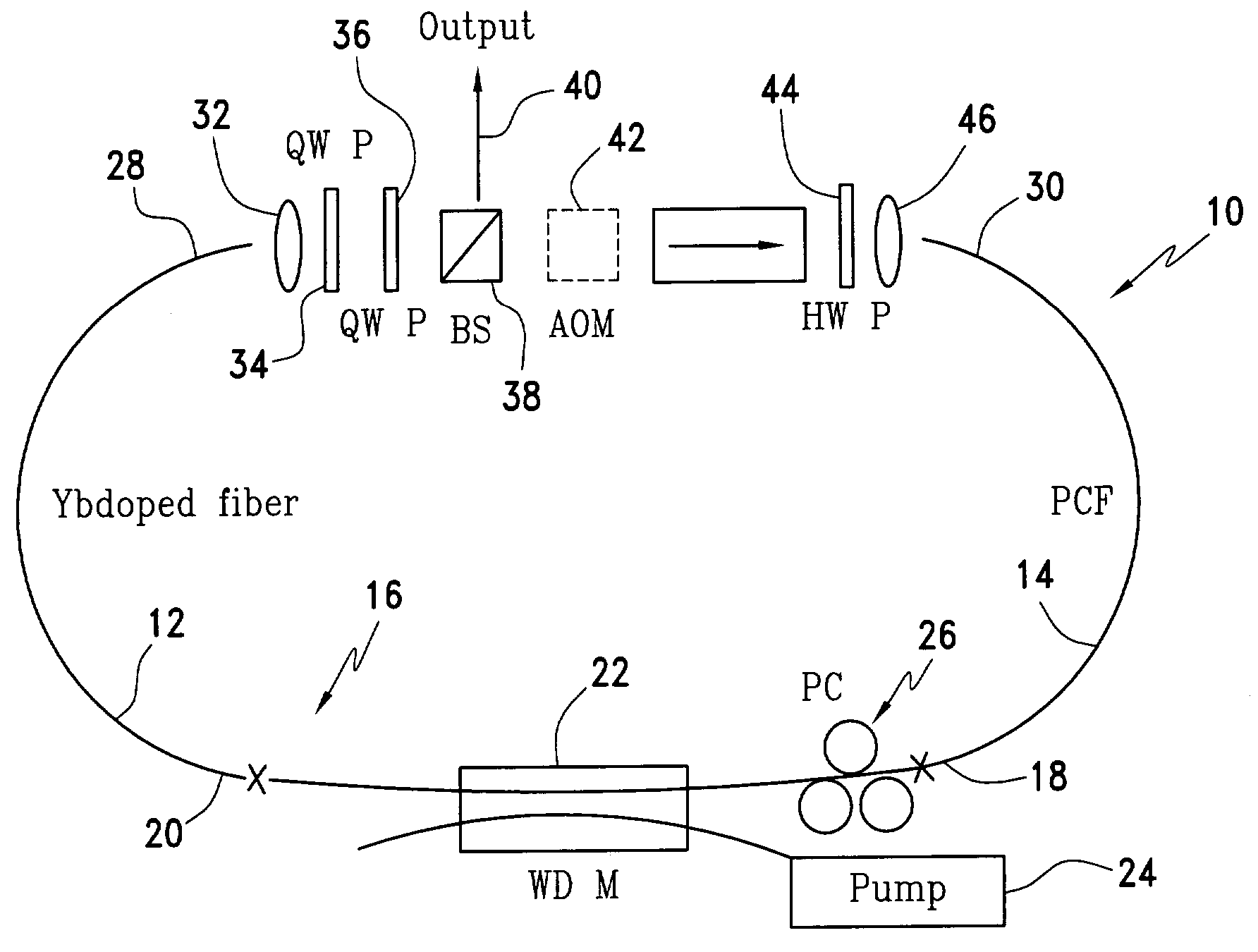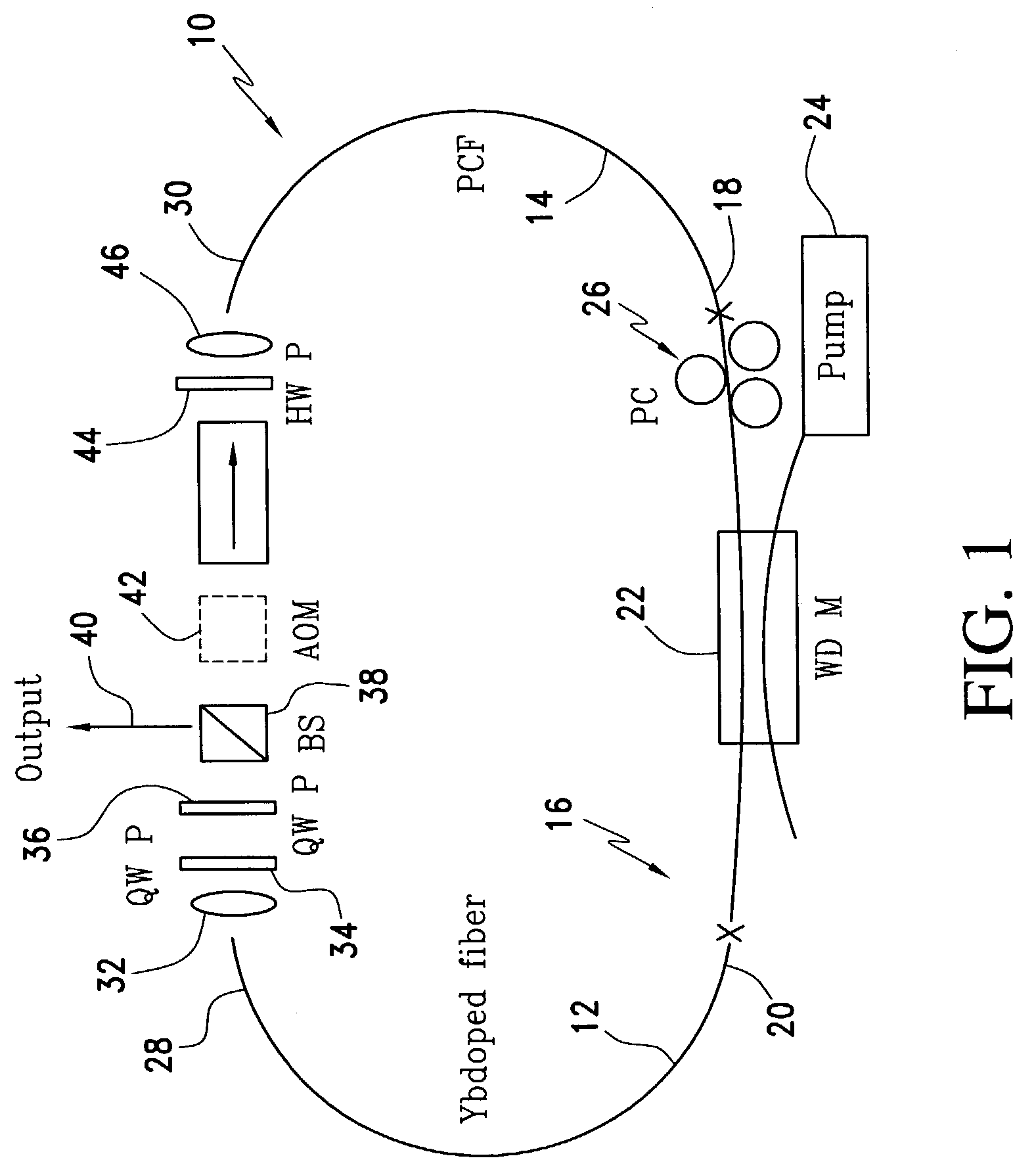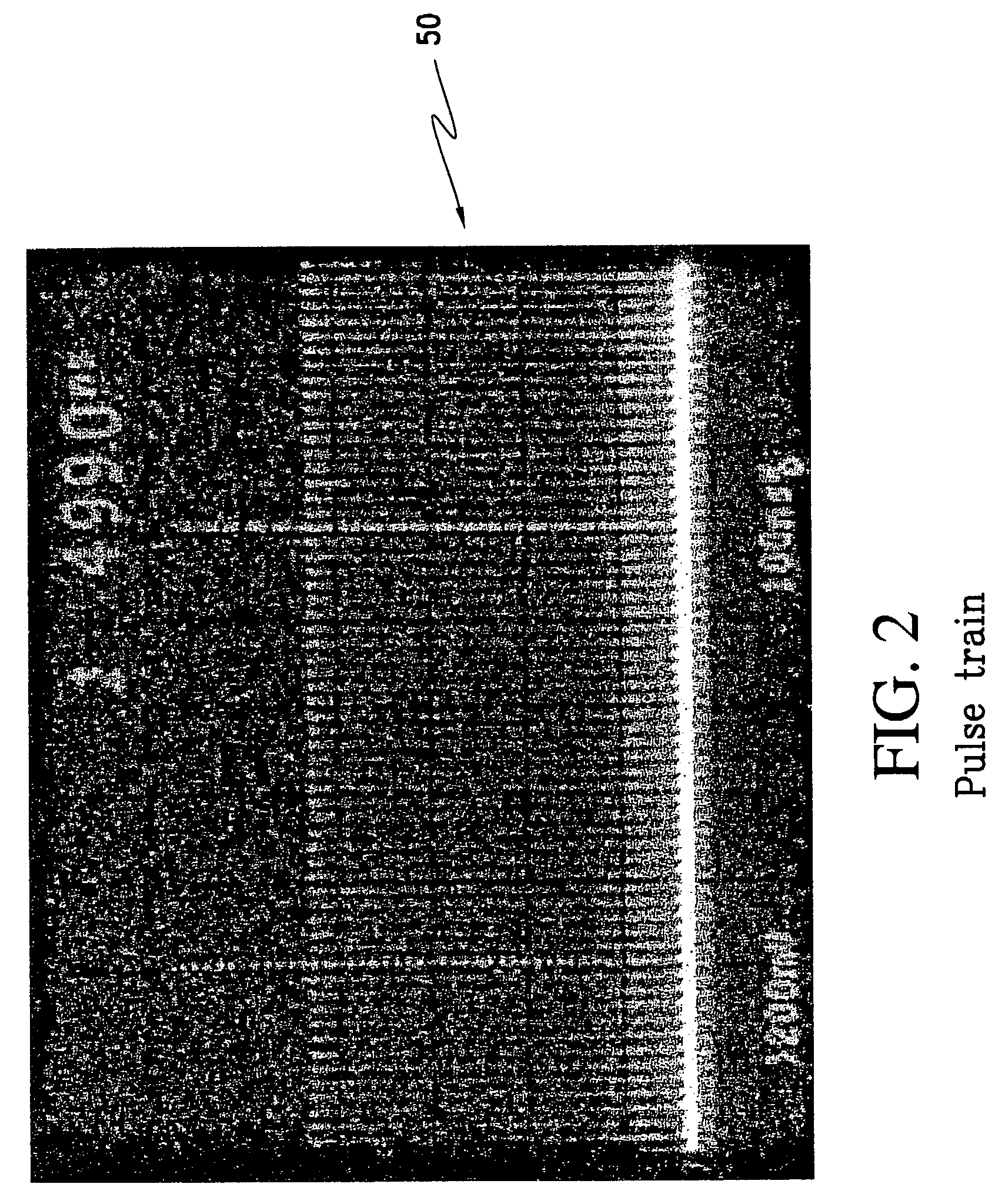Femtosecond ytterbium fiber laser with photonic crystal fiber for dispersion control
a ytterbium fiber and fiber laser technology, applied in the direction of laser details, active medium materials, active medium shape and construction, etc., can solve the problems of reducing the benefits of using fiber medium, hampered efforts in this direction, and not being able to build a femtosecond laser, etc., to achieve the effect of improving performance and environmental stability
- Summary
- Abstract
- Description
- Claims
- Application Information
AI Technical Summary
Benefits of technology
Problems solved by technology
Method used
Image
Examples
Embodiment Construction
[0023]Turning now to a more detailed description of a preferred embodiment of the present invention, a femtosecond pulse soliton fiber laser 10 is illustrated in FIG. 1 as including a Yb doped optical fiber 12 and a photonic crystal fiber (PCF) 14 interconnected to form a unidirectional ring cavity 16.
[0024]In one version of the invention, the Yb fiber 12 was 20 cm in length, had a core diameter of 6 μm, an NA=0.12, and had 23,600 ppm doping, while the PCF fiber (supplied by Crystal-Fibre A / S) had a length of 1.3 m, a core diameter of 2 μm, a 1.4 μm pitch, and a 0.7 average pitch-to-hole-size ratio, and was selected to have substantial anomalous group velocity dispersion (about −40 ps / km) at 1 μm ps2 / km.
[0025]A first end 18 of PCF fiber 14 was connected to a first end 20 of the Yb fiber 12 through a wavelength division multiplexed (WDM) coupler 22, which enabled the Yb fiber to be pumped at 980 nm by a laser diode pump 24 capable of supplying up to 500 nW into the single mode fiber ...
PUM
 Login to View More
Login to View More Abstract
Description
Claims
Application Information
 Login to View More
Login to View More - R&D
- Intellectual Property
- Life Sciences
- Materials
- Tech Scout
- Unparalleled Data Quality
- Higher Quality Content
- 60% Fewer Hallucinations
Browse by: Latest US Patents, China's latest patents, Technical Efficacy Thesaurus, Application Domain, Technology Topic, Popular Technical Reports.
© 2025 PatSnap. All rights reserved.Legal|Privacy policy|Modern Slavery Act Transparency Statement|Sitemap|About US| Contact US: help@patsnap.com



